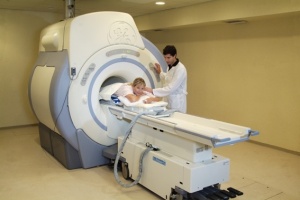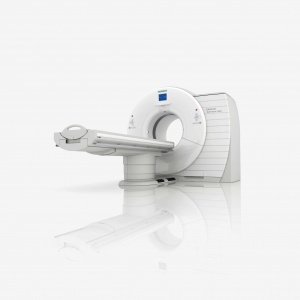January 4th, 2009 by Happy Hospitalist in Better Health Network, Health Policy, Opinion
No Comments »

I just got notice from Blue Cross that they will be implementing a radiology management program for all advanced diagnostic imaging services starting in 2010. The costs of advanced diagnostic imaging (such as CT, MRI, cardiac nuclear medicine) are rising 10-20% per year.
Radiology management companies are an attempt by insurance companies to slow that growth curve. What does that mean if you are a doctor? Let me tell you how the program will operate. Blue Cross calls it their Radiology Quality Initiative or RQI, not to be confused with PQRI. Here are the details of their radiology benefit management initiative.
Q: What are the requirements? Read more »
*This blog post was originally published at The Happy Hospitalist Blog*
November 24th, 2008 by Dr. Val Jones in Audio, News
1 Comment »
I really like new technology, especially when it offers a very obvious advantage for patients. I recently heard about a new CT scanner that is so fast, it dramatically reduces radiation exposure for patients and can take crisp images of moving organs (like the heart). I asked to speak with Siemens’ VP of Sales and Marketing, Dr. André Hartung, to find out about the new Somatom Definition Flash Dual Source CT Scanner (it takes longer to say the machine’s name than to scan your entire body). Of course, I invited my Medgadget friend, Gene Ostrovsky, to join the call. I’ve included a “bonus track” for more advanced readers at the end of this blog post. Enjoy!
Listen to the podcast here:
[audio:http://blog.getbetterhealth.com/wp-content/uploads/2008/11/andrehartunglowq1.mp3]
Dr. Val: Just to set the stage for our listeners – can you explain what a CT scanner is, and how it differs from an MRI?
Hartung: Both CT scanners and MRI machines allow healthcare professionals to look inside the human body for diagnostic purposes. While CT scanners use x-rays to produce images, MRI machines use magnets. CT Scanners are very fast and widely available – almost every hospital has one.
Dr. Val: When would a doctor want to use a CT scanner instead of an MRI machine?
Hartung: CT images are especially good at detecting cancer. Also, because CT scans can be done so quickly, they are also useful diagnostic tools for stroke, heart attack, or when a patient is in critical condition – when every second counts.
Dr. Val: You said that CT scans are based on x-ray technology. How much radiation exposure does the average CT scan cause?
Read more »
October 11th, 2008 by Dr. Val Jones in Expert Interviews
No Comments »

Photo Credit: FUS Foundation
Did you know that one in three women will have a hysterectomy (surgical removal of the uterus) by age 60? It is the second most common surgical procedure among women in the United States. But the question is: are they all necessary? I had a fascinating interview with Dr. Elizabeth Stewart from the Mayo Clinic about some of the reasons behind the potential excess of this type of surgery. You may be surprised to learn that insurance reimbursement guidelines may have something to do with it.
Dr. Val: Women often undergo hysterectomies to treat painful fibroids (benign growths in the uterus). What do women need to know about their fibroid treatment options?
Dr. Stewart: They need to know that they have many different treatment options for uterine fibroids. A hysterectomy is not their only choice. Women should ask their doctor to explain all their options and also make sure that they have the correct diagnosis – menstrual cramping and heavy bleeding doesn’t necessarily mean you have fibroids.
Nowadays we can treat fibroids with hysterectomy, uterine artery ablation, or MRI-guided focused ultrasound surgery (MRgFUS). MRgFUS is a nearly painless procedure where we use focused ultrasound waves to destroy fibroid tissue via heat transfer. I know one woman who went back to work 2 hours after the procedure. Recovery from a hysterectomy or uterine artery ablation can take weeks to months.
Dr. Val: What are some of the advantages and disadvantages of treating fibroids with focused ultrasound? Read more »
October 9th, 2008 by Dr. Val Jones in Expert Interviews
4 Comments »

I’ll admit it – when I was a kid, I admired Dr. Bones (McCoy) of Star Trek. He was a no-nonsense kind of guy who was very clear about his areas of expertise (“Damn it, Jim, I’m a doctor, not a spaceship engineer.”) But best of all, Dr. McCoy had special healing gadgets that he could wave over people for diagnostic and therapeutic purposes. Those “tricorders” fascinated me – and I always wished I could have one myself.
And now my dream could actually come true: advances in focused ultrasound technology (FUS) make non-invasive surgical procedures possible. I attended the very first international symposium about this new technology, and learned some very exciting things.
First of all, Dr. Ferenc Jolesz gave a riveting key note address about the history of focused ultrasound technology, and why modern advances have made this treatment modality feasible. Scientists have been fantasizing about heating tissues with sound waves since 1942 when the first ultrasound experiment was conducted on a liver tumor. Unfortunately back then, imaging studies (beyond X-rays) had not yet been developed – so it was virtually impossible to “see” one’s target.
However, now that magnetic resonance imaging (MRI) machines are capable of displaying our innards in exquisite detail Read more »
October 7th, 2008 by Dr. Val Jones in Medblogger Shout Outs
No Comments »
Thanks to Vijay (aka Scanman) for hosting this post on his site:
Well hello there, folks. It’s Dr. Val posting from Scanman’s blog in India! The hospitality I’ve been receiving from the medical blogging community has been tremendous. So many trusting souls, allowing me to post directly to their WordPress acccounts. My goodness… I could just remain nomadic and not create a new blog home for myself. Maybe this is blogging 3.0!?…
Read the rest of the post here.
….
















